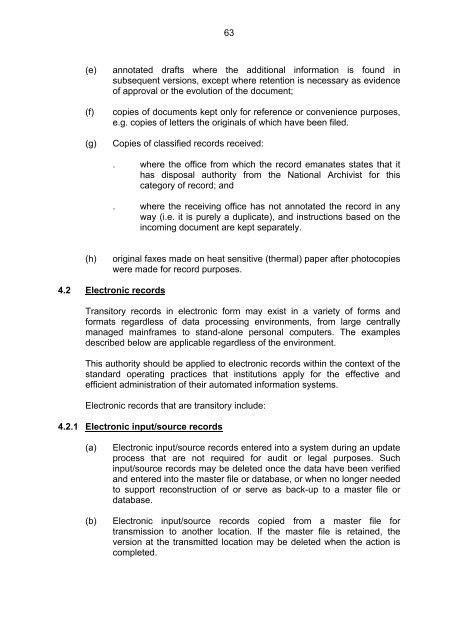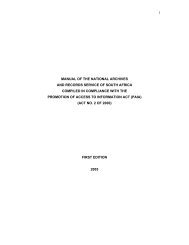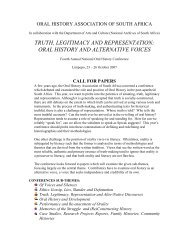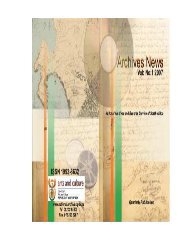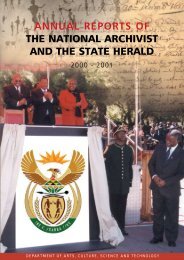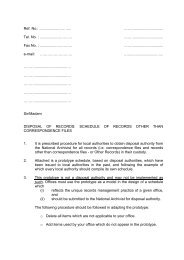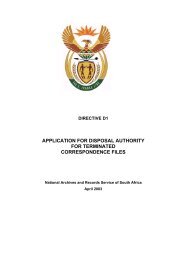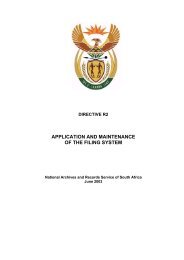managing electronic records in governmental bodies - National ...
managing electronic records in governmental bodies - National ...
managing electronic records in governmental bodies - National ...
Create successful ePaper yourself
Turn your PDF publications into a flip-book with our unique Google optimized e-Paper software.
63<br />
(e)<br />
(f)<br />
(g)<br />
annotated drafts where the additional <strong>in</strong>formation is found <strong>in</strong><br />
subsequent versions, except where retention is necessary as evidence<br />
of approval or the evolution of the document;<br />
copies of documents kept only for reference or convenience purposes,<br />
e.g. copies of letters the orig<strong>in</strong>als of which have been filed.<br />
Copies of classified <strong>records</strong> received:<br />
. where the office from which the record emanates states that it<br />
has disposal authority from the <strong>National</strong> Archivist for this<br />
category of record; and<br />
. where the receiv<strong>in</strong>g office has not annotated the record <strong>in</strong> any<br />
way (i.e. it is purely a duplicate), and <strong>in</strong>structions based on the<br />
<strong>in</strong>com<strong>in</strong>g document are kept separately.<br />
(h)<br />
orig<strong>in</strong>al faxes made on heat sensitive (thermal) paper after photocopies<br />
were made for record purposes.<br />
4.2 Electronic <strong>records</strong><br />
Transitory <strong>records</strong> <strong>in</strong> <strong>electronic</strong> form may exist <strong>in</strong> a variety of forms and<br />
formats regardless of data process<strong>in</strong>g environments, from large centrally<br />
managed ma<strong>in</strong>frames to stand-alone personal computers. The examples<br />
described below are applicable regardless of the environment.<br />
This authority should be applied to <strong>electronic</strong> <strong>records</strong> with<strong>in</strong> the context of the<br />
standard operat<strong>in</strong>g practices that <strong>in</strong>stitutions apply for the effective and<br />
efficient adm<strong>in</strong>istration of their automated <strong>in</strong>formation systems.<br />
Electronic <strong>records</strong> that are transitory <strong>in</strong>clude:<br />
4.2.1 Electronic <strong>in</strong>put/source <strong>records</strong><br />
(a)<br />
(b)<br />
Electronic <strong>in</strong>put/source <strong>records</strong> entered <strong>in</strong>to a system dur<strong>in</strong>g an update<br />
process that are not required for audit or legal purposes. Such<br />
<strong>in</strong>put/source <strong>records</strong> may be deleted once the data have been verified<br />
and entered <strong>in</strong>to the master file or database, or when no longer needed<br />
to support reconstruction of or serve as back-up to a master file or<br />
database.<br />
Electronic <strong>in</strong>put/source <strong>records</strong> copied from a master file for<br />
transmission to another location. If the master file is reta<strong>in</strong>ed, the<br />
version at the transmitted location may be deleted when the action is<br />
completed.


